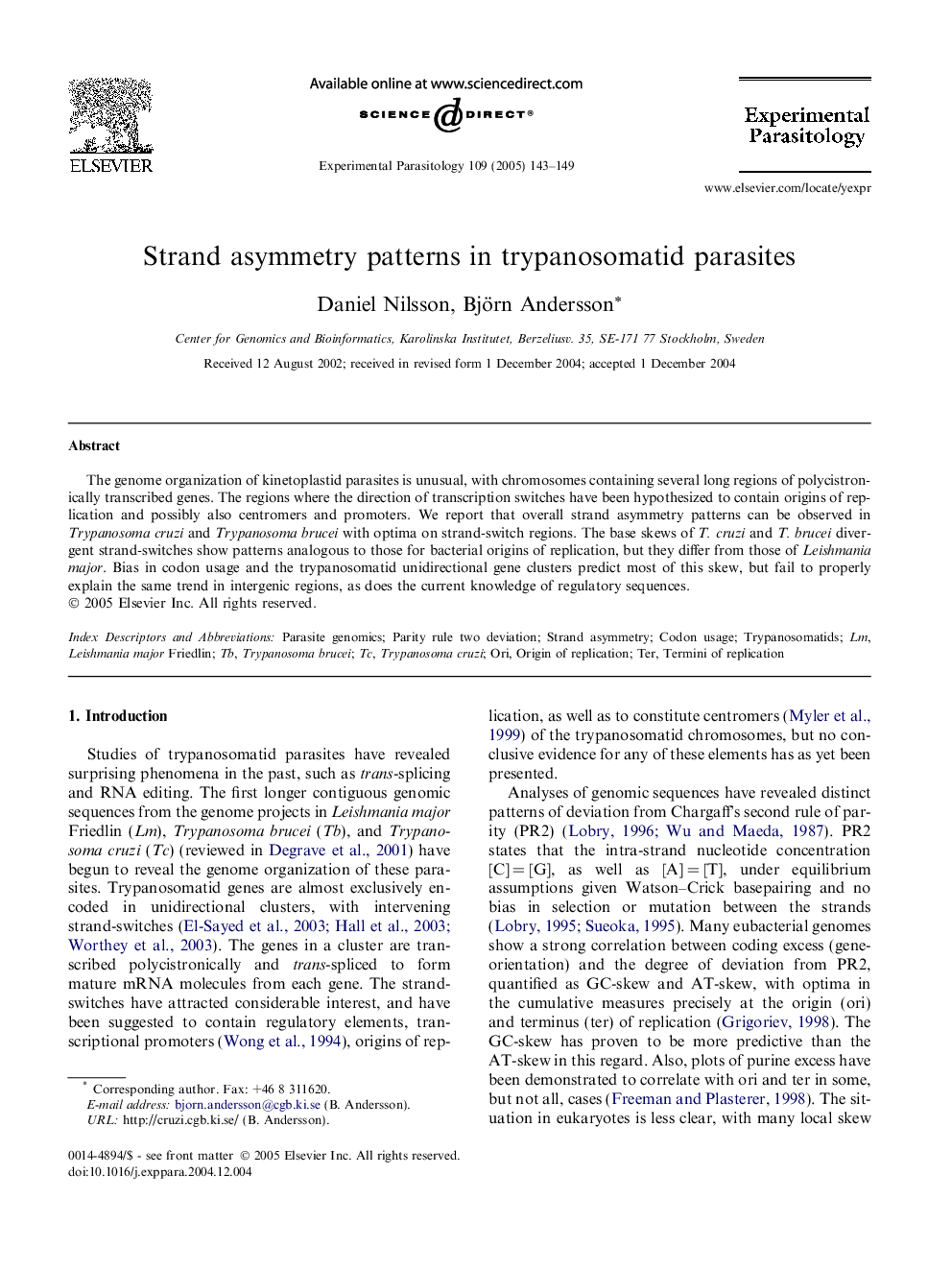| Article ID | Journal | Published Year | Pages | File Type |
|---|---|---|---|---|
| 9442660 | Experimental Parasitology | 2005 | 7 Pages |
Abstract
The genome organization of kinetoplastid parasites is unusual, with chromosomes containing several long regions of polycistronically transcribed genes. The regions where the direction of transcription switches have been hypothesized to contain origins of replication and possibly also centromers and promoters. We report that overall strand asymmetry patterns can be observed in Trypanosoma cruzi and Trypanosoma brucei with optima on strand-switch regions. The base skews of T. cruzi and T. brucei divergent strand-switches show patterns analogous to those for bacterial origins of replication, but they differ from those of Leishmania major. Bias in codon usage and the trypanosomatid unidirectional gene clusters predict most of this skew, but fail to properly explain the same trend in intergenic regions, as does the current knowledge of regulatory sequences.
Keywords
Related Topics
Life Sciences
Immunology and Microbiology
Parasitology
Authors
Daniel Nilsson, Björn Andersson,
